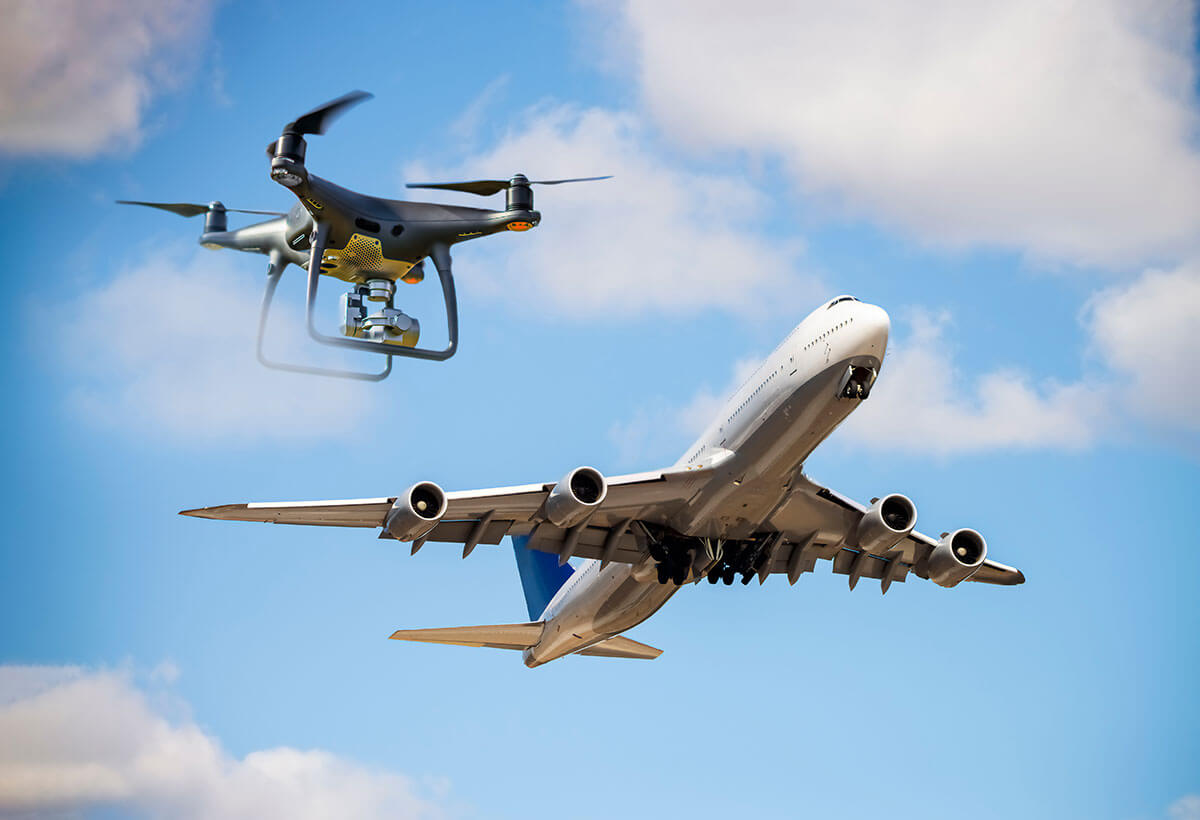By: Michelle Duquette, AG Operations Ambassador
In this first segment of our “Words Matter” series, aimed at candidly discussing the impacts word choices can have on achieving operational success, we start with “risk.” Read on to dive deeper into the different meanings of “risk” to a few different folks… and what we might do to coalesce around a common understanding of it.
Evolution Is Inevitable
Aviation has over 100 years of evolutionary learning systematically curated across literature, textbooks, training curricula, seasoned professionals, and academic certifications. The introduction of drones (or uncrewed aircraft systems (UAS)) has fundamentally transformed the aviation landscape and led to significant shifts in the meanings of aviation-specific terms. As such, some fundamental assumptions and terms continue to evolve.
Yet some of these terms are so intrinsic in traditional aviation circles that it may never occur to those using them in the context of these new entrants that they are talking past one another. This can lead to misunderstandings, miscommunication, coordination breakdown, friction, frustration, noncompliance or mission delay. For example, people use the term “ risk” all the time. But what do they mean?
In Aviation Terms
In traditional aviation, risk is predominantly assessed through the FAA’s Safety Management System (SMS). This system identifies the likelihood and severity of predefined hazards when operating in the National Airspace System (NAS) and applies mitigations to reduce their potential impacts. Considerations can include aircraft mechanical integrity, operational maturity, pilot readiness, environmental factors, and airspace management. Despite three recent high-visibility fatal aircraft accidents, this proven process – and the terminology that goes along with it – has provided us with the safest airspace in the world.
And Then There Were Drones
Logically, introducing drones into already complex airspace requires additional considerations for both drone operators and legacy aviators. The Federal Aviation Administration (FAA) UAS Integration Office has made significant strides in providing meaningful UAS educational resources, training, and ongoing collaboration through extensive materials available on the FAA website.
The FAA has even published community-specific guidance. For example, an FAA team issued a comprehensive Public Safety Toolkit that outlines applicable aviation rules and exception processes. The toolkit includes safe operating guidance based on proven aviation risk management practices. It also uses deliberate, standardized language with clear aviation-specific definitions. The FAA has tailored critical aviation processes to make them more meaningful to law enforcement drone use. Public safety drone operators now understand how to mitigate aviation-related risk well enough for the FAA to approve their operations.
However, when drone communities, including the public safety drone community, discuss the “risk” associated with drone operations, definitions extend beyond aviation and often include considerations more akin to real-time mission-specific concerns.

In Drone Speak
Things can get tricky because when drone professionals speak to risk, they often do so through many different lenses. These lenses can include deployment, hazards, environmental, or communications perspectives, to name a few. These individual understandings of risk, while important to specific communities and businesses, could lend themselves to broader confusion. Read on to understand why.
Public Safety Risk: The Deployment Lens
When Chief Roxana Kennedy of the Chula Vista Police Department (CVPD), and her UAS/DFR (Drone as First Responder) Program Manager, Lieutenant John English, think of “risk,” they think about four operational priorities that their team considers each time they deploy a drone:
- Safety of the Community: Identifies the likelihood and severity of department-defined hazards related to community safety.
- Safety of Officers Through Better Information: Identifies the likelihood and severity of department-defined hazards related to officer safety.
- Preventing Misinterpretation or Overreaction: Identifies the likelihood and severity of department-defined hazards related to officer response.
- The Complexity of Missions: Identifies the likelihood and severity of department-defined hazards related to the complexities of advanced tech.
In short, CVPD views “risk” in terms of the impacts a UAS deployment can have on both the community and its officers.
Operational Risk: The Hazards Lens
Contrast this with the thinking of Robert Karraker, Senior Counter Drug/Transnational Organized Crime Analyst at Invictus International Consulting, LLC. In a recent social media post aimed at first responders and describing preparedness for UAS incidents, he defined “risks” as everything “from explosives and chemical payloads to cyber threats and contraband.” (In private, he also noted, “These are just the tip of the iceberg.”) Clearly, Karraker defines UAS risks by the potential hazards operators may encounter while operating them.
Meteorologic Risk: The Environmental Lens
Then there’s “risk” for UAS in the eyes of Don Berchoff, CEO of TruWeather Solutions. Not surprisingly, he focuses on the operational environment.
According to Berchoff, “This (weather) risk has always existed for low altitude General Aviation operators, helicopter operators, etc., as ‘the weather hazard.’” The onboard pilot mitigated any related air-to-air or air-to-ground risk it generated. In Berchoff’s opinion, crewed aircraft pilots “were the best weather sensor on the aircraft.” In the future, however, when the pilot is no longer on the aircraft, the weather hazard and subsequent risk will require new methods to communicate that risk to a remote pilot or operator. Berchoff and his team continue to work towards collecting more granular weather data in 3-dimensions to do just this. For Berchoff, risk is all about the weather.
Industry Public Relations: The Communication Lens
Danielle Gagne, the Head of Marketing and Communications for Volatus Aerospace, in contrast, considers risk through a communications lens. “When operating as a public company, communications carry their own risks of failure with their own consequences. Some of these consequences can carry hefty penalties from being offside with regulators to losing public opinion and stakeholder support,” she explained.
Gagne’s comments point to the fact that the risk she deals with on a daily basis in the UAS community can often be a subjective one. Defining subjective risk is a lot like trying to predict the future. In her world, the risk of failed communications can lead to costly misunderstandings, whereas effective communication can rocket a company to the top.
What I Meant Was…
Are you beginning to see where the individual understanding of what “risk” actually means could go sideways, even with the best of intentions?
- CVPD speaks to risk through a deployment lens.
- Karraker speaks to risk through a discovery lens.
- Berchoff speaks to risk through an environmental lens.
- Gagne speaks to risk through a communications lens.
In other words, addressing the types of “risk” Gagne envisions is very different from addressing the “risk” Berchoff or Chief Kennedy means when they use the very same term. It’s not a stretch to imagine all of these highly respected community members engaged in a single discussion at one of our community events all talking about “risk” in very different ways. That isn’t okay on an industry panel where people have paid registration fees for the privilege to learn. It’s especially problematic when planning for a real-world operation or mission when the stakes are high and common understanding is crucial. A recent Flight Safety Foundation publication introduced a crosswalk between aviation (which included AAM but not drones in this first round) and insurance risk. They nicely provided similarities and differences in using the word “risk.” It’s only a matter of time before drone insurance risks become part of that study, and we don’t have our vernacular together yet. A common taxonomy across all aviation is key.

A Luncheon of Buzzword Salads
We’ve done masterful work over the years cultivating “aviation-speak.” Yet, as we evolve, aviation taxonomy effectiveness hinges on the accuracy of its definitions evolving, too. We need to speak to one another clearly and have confidence in that clarity. A disjointed library of taxonomies that use the exact words in different ways or with underlying nuances will only increase the probability of misunderstandings, slow progress and could quickly derail your business.
Gagne said it best: “Words have connotations that change with the cultural milieu—words can be overused, can change meaning or even become meaningless depending on context. Words can also be powerful. How words are used carries a risk (*no pun intended here) with short- and long-term consequences that are difficult to measure in the same way as the failure rate on a load-bearing bolt operating within standard conditions.”
Here is what we (as words matter, “we” for this purpose refers to anyone who uses aviation-speak as their first language) can start doing today: make it real. Describe what you mean without falling back on a luncheon of buzzword salads. That menu inevitably leaves someone unintentionally starving at your table. That person could be someone you need to help your business move forward. Use plain language and take the time to explain what you mean in your own words.
Standards bodies, such as ASTM F-38 and RTCA SC-228, professional advocacy and trade associations, such as the Association for Uncrewed Systems International (AUVSI), and regulatory agency-supported working groups, such as the Drone Safety Team, may already have created a clear and precise drone-based meaning for the terms you plan to use. To the extent that they have not yet defined an important term, or you discover nuances that put their definitions of the same word at odds with one another, connect with them and lend your voice to the discussion!
A Positive Glidepath
The rise of drone technology has made the shifting meaning of aviation-specific terms inevitable. Although the evolution of aviation terminology with the introduction of drones presents challenges, it also offers opportunities for progress and innovation. We can leverage the work of various organizations and get involved ourselves to shape this future. In the meantime, by simply employing plain language (saying what we mean & meaning what we say), we can foster greater understanding and avoid the “risk” of talking past each other.
If you have experienced frustration with how the term “risk” has been used in your world, send me a message and tell me about it. Also, if you have examples of how other aviation terms need to evolve, tell me about them. Perhaps we can showcase them in the next article. (I have my own list ongoing, including “accident,” “balance,” and “benefit,” among many others).

